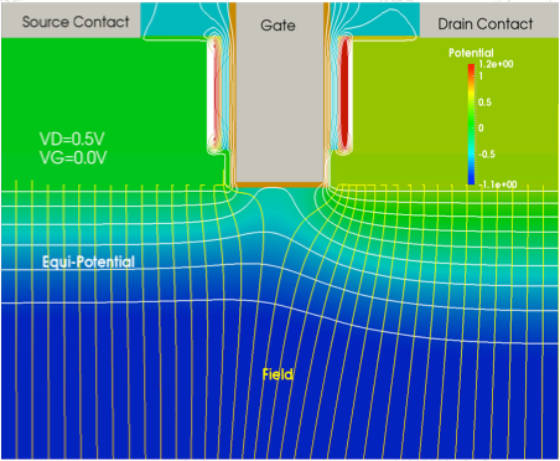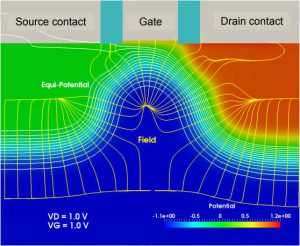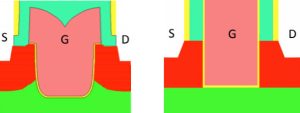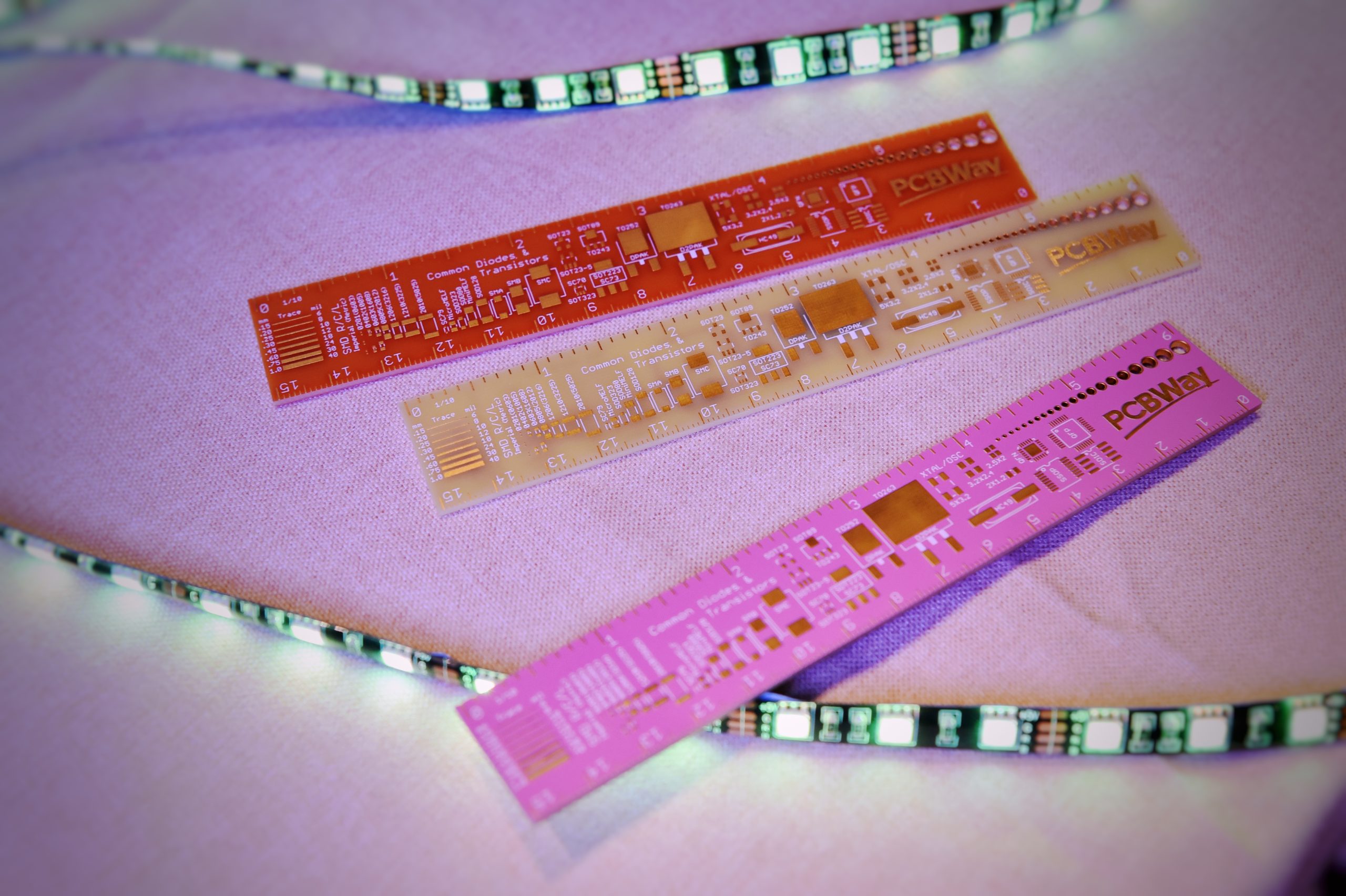
The company is aiming its flat field transistor (right) at the sense amplifiers of DRAM ICs
“Although the DRAM cell transistors have undergone a dramatic revolution from recess gate to saddle FinFET, for cost reasons the DRAM sense amplifiers and periphery continue to be manufactured using conventional bulk mosfets,” according to the company. “However, with the scaling of the DRAM cell, the margins of the sense amplifier decrease – statistical variability of bulk mosfets is the main factor eroding the margins.”

Conventional bulk mosfet, modelled by Semiwise
Compared to bulk mosfets, for its flat field transistor Semiwise is claiming: Better electrostatic integrity (allowing lower doping), higher mobility, lower statistical variability, lower noise and lower leakage.
These advantages, claims the company, can be sustained down to 22nm bulk CMOS where the flat field device reduces sense amplifier offset variability by >50%, which translates to a 4x reduction in the area of the amplifier compared to a bulk mosfet amplifier of identical offset variability distributions.
Semiwise CEO Asen Asenov points to Hynix’ ‘recess gate’ transistor which is another device intended to tackle amplifier statistical variability.

Hynix’ recessed gate transistor (left) and Semiwise flat field transistor (right) – Semiwise diagrams
He claims that these are more complex to manufacture than his flat field transistors, have poorer statistical variability and therefore looser offset distribution at identical transistor performance, or are slower.







